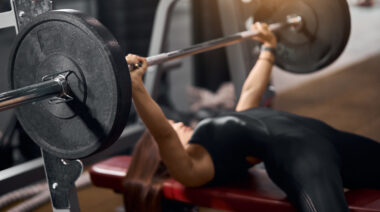In my last article, I discussed how you can begin to understand your movement limitations by establishing your flexibility and mobility in five different areas of the body. You can use this knowledge to improve your range of motion by introducing specific flexibility and mobility protocols to your daily pre- and post-training routine. It will take time to see a difference in your movement pattern, but the wait will be worth it, as your athletic performance will improve.
The suggested mobilization and stretching techniques below are broad and provide you with a few ideas on how to improve flexibility and mobility in these areas. As always, enter into each pose or mobility technique slowly. If you feel pain beyond that of a stretch, stop and move on to the next one. Spend 30 seconds to a minute in each position.
Internal/External Shoulder Rotation
The shoulder joint is complex in its design and extremely mobile in its movement execution. Functionally, this allows you to lift, push, pull, carry, swing, and press in many different directions. When one part of the joint is compromised through injury, strain, or general tightness, the degrees of those movements become reduced.
The ability of the shoulder to internally and externally rotate without pain or restriction determines our ability to execute movements and positions like snatches, front and back squats, and cleans. To improve your ability to achieve the correct positions for these exercises, try the following:
The Spear: As you pull the bottom of the PVC away from you, relax the shoulder being stretched.
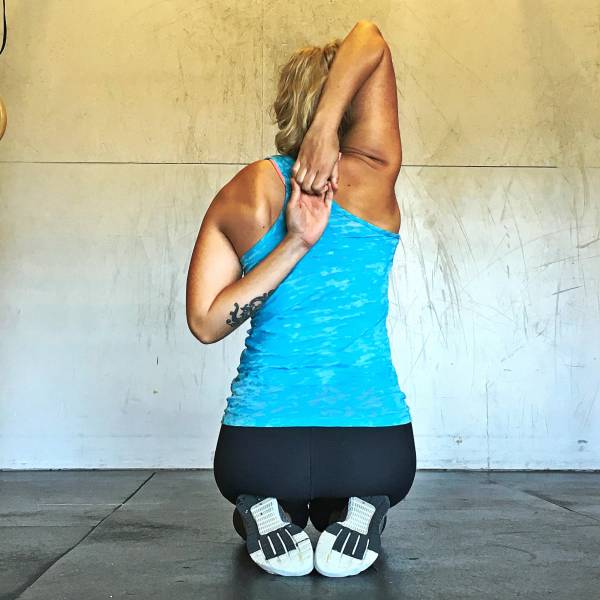
Archer Arms: Start seated on your shins. Grab your right elbow with your left hand and draw your elbow as far behind the back of the head as possible. Keep your right elbow where it is as you extend your left arm out to the left. Turn your thumb down and begin to reach around your lower back and up towards your right fingers. If touching your right finger tips is not possible, reset and grab a strap or band and start the process over again, this time holding onto the strap with your right hand. This will give you something to grab onto once you reach your left arm around.
Spinal Rotation
The 26 vertebrae that make up the spine are separated into five sections: the cervical, thoracic, lumbar, sacrum, and coccyx. When we talk about spinal rotation, we are specifically referring to the thoracic area of spine as it is the most mobile. It allows for rotation, flexion, and extension of the trunk.
These two drills can help wake up your thoracic spine:
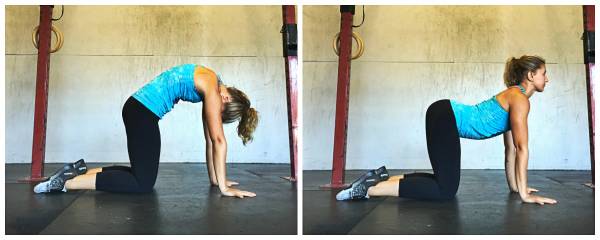
Cat/Cow: As you move through extension (Cow) and flexion (Cat) your goal is to create continuous movement between the two position. This is so we are improving body awareness and movement in the spine while we are warm up the lower and upper back.
- Cow: Start in a table top position with your hand under your shoulder and your knees under your hips. Drop your belly, arch your back and stick your tailbone up towards the ceiling.
- Cat: From Cow, press through your palms, round your upper back as you send your tailbone towards the backs of your knees. Drop your chin towards your chest.
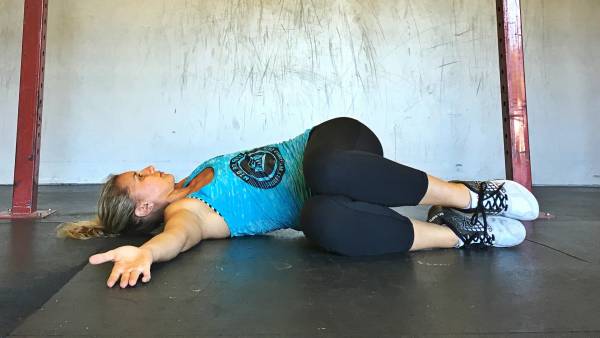
Reclined Spinal Twist: Start on your back with your knee together and into your chest. With your arms out wide, and your knees still together, draw the knees over to the right and then to the left. Do this 20 times.
Hamstrings
The three muscles that make up the hamstrings connect the sitz bones to the backs of the knees. This group of muscles is critical for everyday activities such as walking and running. As they become tight due to inactivity, they can pull the pelvis down creating a posterior pelvic tilt, which leads to lower back pain and a compromised spinal position during barbell lifts.
These two techniques lengthen the hamstrings through dynamic movement pre-workout, (good morning) and static stretching post-workout (reclined hamstring stretch):
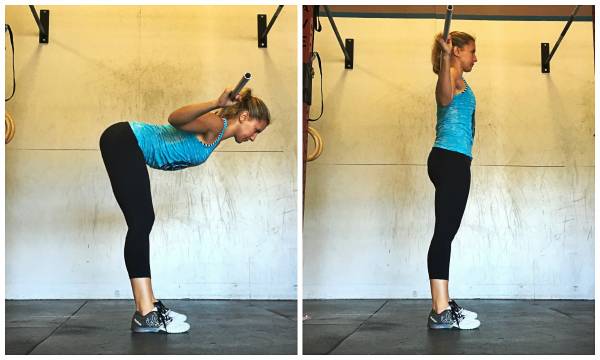
Good Morning: Place a PVC pipe on your back. Separate your feet about hips distance. With your toes forward and a soft bend at the knees, hinge forward at the hips as you keep your spine long and your chest up. Once you’ve lowered your chest enough to feel a stretch in the hamstrings, drive through your feet to stand. Do this 20 times.
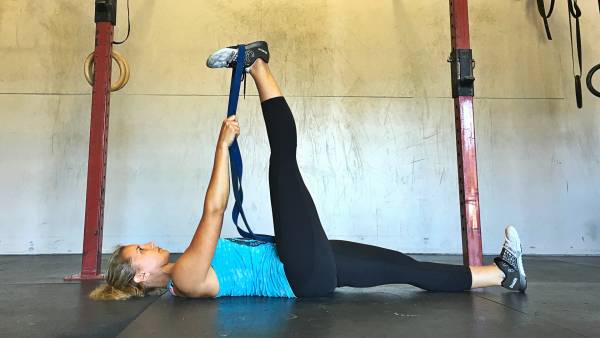
Reclined Hamstring Stretch: Start on your back. Wrap a band or strap around the arch of your right foot and extend your leg. Keep your arms long and your shoulders relaxed. Drive your right heel up as you draw your shin towards your face.
Hip Flexors
The hip flexors contribute to spine stability and are the primary movers during hip flexion. This means every time we walk, bend to pick something up, or do an abdominal crunch we are contracting our hip flexors. When this group of muscles becomes tight, we lose range of motion, and we lose power. And when we lose power, we lose out on our innate capacity as humans to be fast and powerful.
These two movements will help open up your hip flexors, restoring a range of motion that will allow for full power generation:
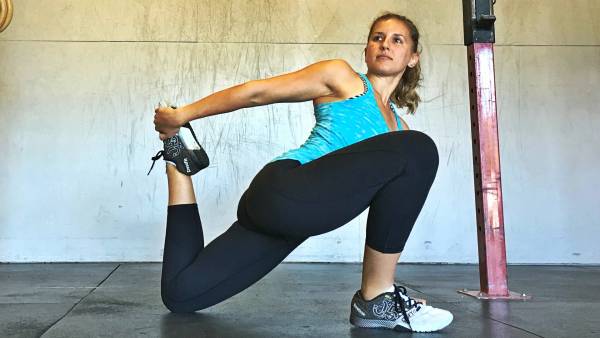
Twisted Monkey: Start in a low lunge with your right foot forward. Walk the right foot to the right a couple of inches. Bring your hands inside of the front foot. Bend your back knee and grab your foot with your right. Use a strap around your left ankle if needed.
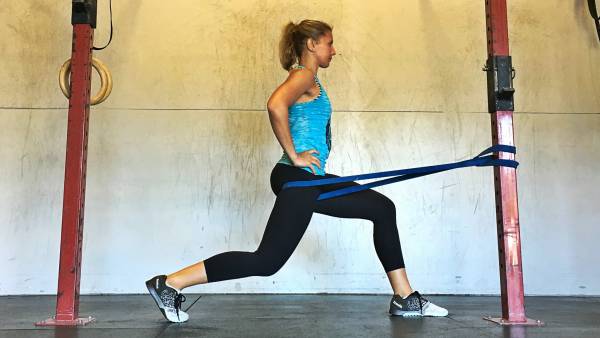
Banded Hip Flexor: Using a thick resistance band, wrap the band around a pole or something sturdy. Facing the pole, step your right leg into the band and wrap it around your right leg under your right butt cheek. Step the right leg back and left foot forward creating a high lunge position. Using the resistance against the band, bend and straighten the back leg slowly.
Ankles
The ankle joint is often overlooked, but is critical for functional fitness athletes and runners. For weightlifters, squatting to full depth is key to building strength, and ankles can be a limiting factor. Strong and mobile ankles provide the foundation for the rest of the body to move well. For runners, ankles are part of the foundation for every stride, and without a solid base you cannot be a forceful runner.
These two positions will help increase the available range of motion for your ankles:
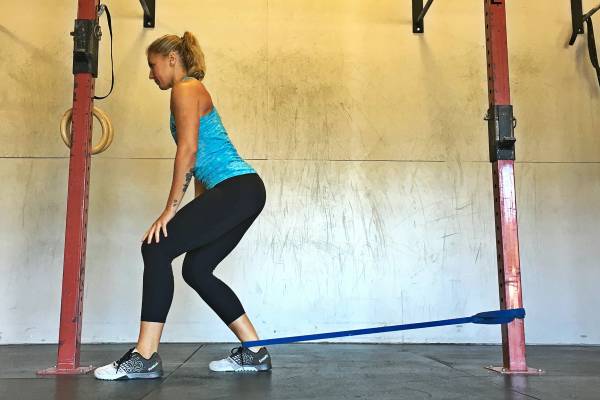
Banded Ankle: Using a thick resistance band, wrap the band around a pole or something sturdy. The band should be slightly higher than your ankle. Face away from the pole and wrap the band around the top of the ankle. Step your foot forward to create resistance. Bend the knee as you drive your heel down.
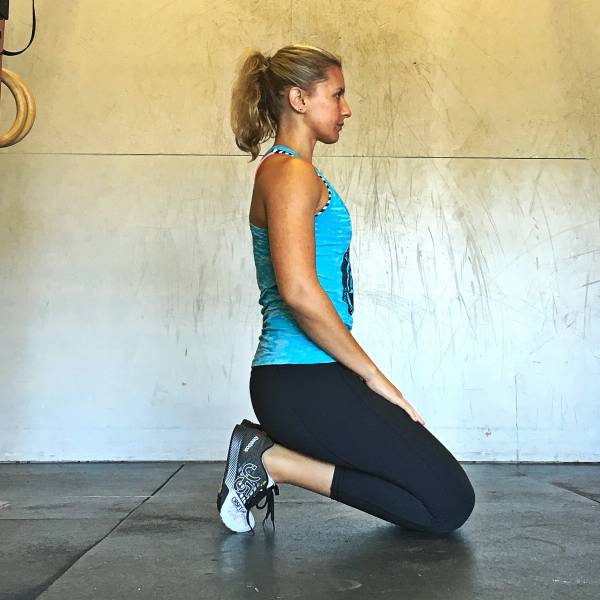
Toe Stretch: From standing, with your feet together, drop your hips to your heels. Keep your toes tucked under and the knees together. Drop your knees down to the ground. Stack your shoulders over your heels.
Change Requires Patience
Changing your movement patterns takes patience and dedication. If you are diligent and unrelenting during the long process, the results will show. By adding 10-15 minutes of mobility and flexibility work both pre- and post-workout, you will significantly improve your range of motion.
Suffering from chronic pain? Time to find the cause and be rid of it for good:
Banish Pain Permanently: 3 Self-Assessment Tools
All photos courtesy Stephanie Ring.



